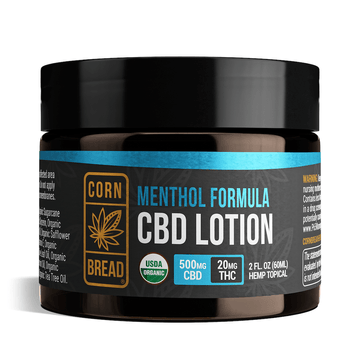Unleash the Power of Serenity CBD Arnica: Experience Nature's Healing Touch
Unleash the Power of Serenity CBD Arnica: Experience Nature's Healing Touch
Blog Article
Check Out the Scientific Research Behind CBD Discomfort Lotion and Its Therapeutic Results
As the need for natural pain relief options continues to climb, the clinical area has actually turned its interest to the therapeutic impacts of CBD pain cream. Understanding the complex devices whereby CBD connects with the body's endocannabinoid system to reduce pain is important in decoding its efficiency. From its anti-inflammatory homes to the facility neurological results that regulate pain assumption, CBD's prospective as a discomfort monitoring service is a subject of recurring research study and clinical rate of interest. Remain tuned to untangle the science behind CBD pain lotion and how it holds pledge for those seeking alternative opportunities for pain alleviation.
Endocannabinoid System and CBD Discomfort Relief
What duty does the endocannabinoid system play in CBD pain alleviation? The endocannabinoid system (ECS) is a complex network of receptors, enzymes, and endocannabinoids that play a critical duty in regulating various physiological procedures, consisting of pain experience. It communicates with the ECS to regulate pain understanding and swelling when CBD is used topically or ingested. CBD applies its results by targeting cannabinoid receptors, particularly CB1 and CB2 receptors, which are abundant in the main nervous system and immune cells, respectively. By binding to these receptors, CBD can inhibit the transmission of discomfort signals and minimize swelling, leading to pain alleviation.

Devices of CBD for Pain Monitoring
Checking out the detailed systems whereby CBD operates in discomfort monitoring exposes its possible as a beneficial restorative device in minimizing numerous forms of pain. CBD interacts with the endocannabinoid system, making up cannabinoid receptors (CB1 and CB2) dispersed throughout the body. When CBD is provided, it modulates these receptors, influencing neurotransmitter release and wetting pain signals. Furthermore, CBD's anti-inflammatory buildings play an important duty suffering management by minimizing swelling at the site of pain.

Anti-Inflammatory Qualities of CBD
In elucidating the effectiveness of CBD suffering management, a remarkable aspect depends on its potent anti-inflammatory residential or commercial properties. CBD, or Continued cannabidiol, has check these guys out actually amassed attention for its capability to modulate inflammatory responses within the body. Swelling is a complex organic reaction that plays an important function in the body's immune system, however when it ends up being persistent, it can add to numerous health and wellness problems, including discomfort. CBD connects with the endocannabinoid system, particularly targeting CB2 receptors discovered in the immune cells. By triggering these receptors, CBD can assist manage immune reactions and reduce inflammation.
Studies have revealed that CBD can prevent inflammatory arbitrators and cytokines, thereby moistening the inflammatory waterfall. This anti-inflammatory effect is especially encouraging for conditions identified by chronic swelling, such as arthritis, inflammatory bowel condition, and neuropathic pain. By easing inflammation, CBD not just deals with the signs but also targets the underlying root cause of discomfort, making it an important healing representative for handling a vast array of inflammatory conditions.
Neurological Impacts of CBD on Pain
CBD puts in extensive neurological results on pain perception via its communication with certain receptors in the central nervous system. By affecting the task of these receptors, CBD can aid control discomfort level of sensitivity and inflammation, supplying possible restorative benefits for people enduring from numerous kinds of discomfort conditions.
Research studies have shown that CBD's action on the endocannabinoid system can result in the inhibition of pain signaling pathways, decreasing the understanding of discomfort. Furthermore, CBD has been found to have neuroprotective properties, which can help alleviate neuropathic discomfort by safeguarding nerve cells from damages. The capacity of CBD to regulate pain at a neurological level makes it an appealing choice for taking care of chronic discomfort conditions where conventional treatments may fail.
Clinical Researches Supporting CBD Discomfort Relief

Verdict
Finally, the scientific research behind CBD pain cream reveals its possible healing results with the modulation of the endocannabinoid system. CBD's mechanisms for discomfort monitoring include its anti-inflammatory residential properties and neurological results on discomfort assumption. Professional researches sustain using CBD for discomfort alleviation. Additional research is required to completely comprehend the degree of CBD's benefits in managing various types of discomfort.
As the demand for natural pain alleviation options continues to increase, the clinical community has actually turned its attention to the restorative results of CBD discomfort cream. From its anti-inflammatory buildings to the complex neurological impacts that regulate pain assumption, CBD's prospective as a pain management solution is a subject of ongoing research study and professional rate of interest.Structure upon the understanding of CBD's neurological impacts on discomfort perception, scientific studies have given valuable understandings into the effectiveness of CBD in providing discomfort relief. A study released in the European Journal of Pain demonstrated that applying CBD topically decreased pain and inflammation in rats with arthritis without any kind of obvious side effects. CBD's systems for discomfort monitoring include its anti-inflammatory homes and neurological impacts on discomfort perception.
Report this page